Aquatic Invertebrates
Media
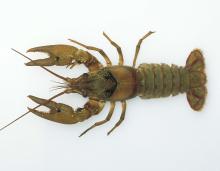
Species Types
Scientific Name
About 38 species in Missouri
Description
Crayfish are freshwater aquatic invertebrates that look a lot like small lobsters, to which they are related. There are about 38 species of crayfish in Missouri.
Media
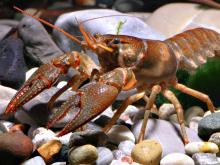
Species Types
Scientific Name
Faxonius quadruncus (formerly Orconectes quadruncus)
Description
The St. Francis River crayfish is rather small and dark brown, with blackish blotches or specks over the upper surfaces of the pincers, carapace, and abdomen. It is limited to the St. Francis River and its tributaries.
Media
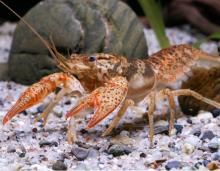
Species Types
Scientific Name
Faxonius hylas (formerly Orconectes hylas)
Description
The woodland crayfish is stout, reddish tan to dark brown, with numerous blackish specks and blotches on the pincers, carapace, and abdomen. It occurs only in Missouri, especially in the Black River and its tributaries.
Media
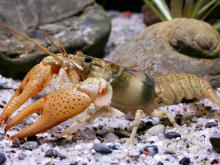
Species Types
Scientific Name
Faxonius ozarkae (formerly Orconectes ozarkae)
Description
The Ozark crayfish is light brown to reddish brown with numerous black specks on the pincers and often on the abdomen as well. The pincers are broad and powerful. It lives in the White and Black stream systems.
Media
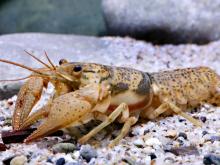
Species Types
Scientific Name
Faxonius peruncus (formerly Orconectes peruncus)
Description
The Big Creek crayfish is moderately small and brown. It has a very localized distribution centered in Big Creek and its tributaries, in the St. Francis River basin. It lacks bright colors, but blackish specks and blotches occur over the top surfaces of the body and pincers.
Media

Species Types
Scientific Name
Faxonius harrisonii (formerly Orconectes harrisonii)
Description
The belted crayfish is medium-small, tan, with a distinctive pattern of alternating olive-green and reddish-brown bands on the abdominal segments. It is found only in the Big River and its tributaries.
Media

Species Types
Scientific Name
Faxonius medius (formerly Orconectes medius)
Description
The saddleback crayfish has a bold blackish band across the hind margin of the carapace and lacks dark blotches or specks. The pincers are broad and powerful. It occurs in the Big and Meramec river drainages.
Media
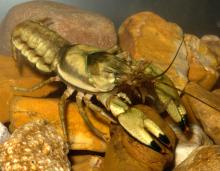
Species Types
Scientific Name
Faxonius neglectus (formerly Orconectes neglectus)
Description
The ringed crayfish is olive green to reddish tan and usually has black or brown rings around the pincer tips. In Missouri it is found in clear, rocky Ozark streams in the southwestern quarter.
Media
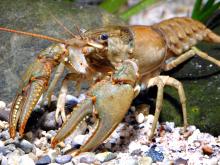
Species Types
Scientific Name
Faxonius virilis (formerly Oronectes virilis)
Description
The virile crayfish is large, reddish brown or green, and lacks prominent markings. The pincers are green with orange tips and are studded with whitish knobs. Paired dark blotches run along the abdomen. This species is widespread.
Media
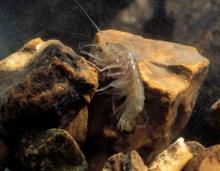
Species Types
Scientific Name
Species in the crustacean order Amphipoda
Description
Often overlooked by people, but eagerly sought by fish, Missouri’s amphipods resemble shrimplike sowbugs. Scuds live in various aquatic habitats, and several species inhabit caves.
See Also
About Aquatic Invertebrates in Missouri
Missouri's streams, lakes, and other aquatic habitats hold thousands of kinds of invertebrates — worms, freshwater mussels, snails, crayfish, insects, and other animals without backbones. These creatures are vital links in the aquatic food chain, and their presence and numbers tell us a lot about water quality.





















